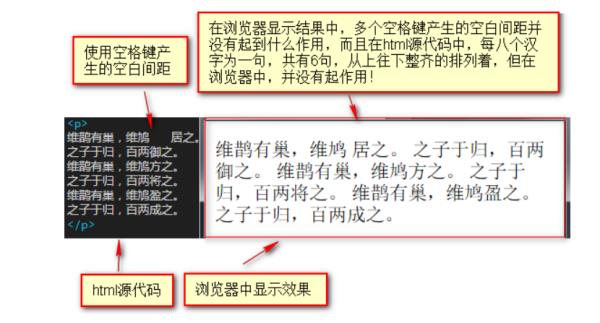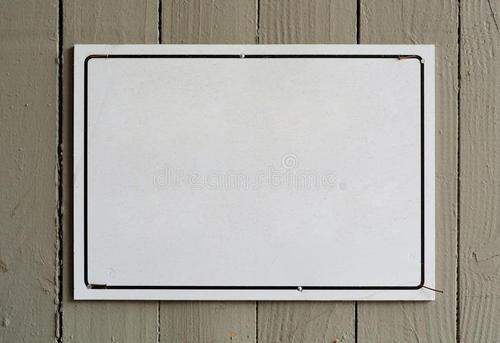空白符号是啥?
Posted
tags:
篇首语:本文由小常识网(cha138.com)小编为大家整理,主要介绍了空白符号是啥?相关的知识,希望对你有一定的参考价值。
空白字符,也可简称“空白符”,通俗理解,就是不会显示出来的字符,类似空格符、回车换行符、制表符之类的字符,从视觉效果上来看,只是一个空白区域而已。
空白字符根据字符的三个种类,分别有以下三种用途
1、空格符可以增加字符与字符之间的间隔效果;
2、回车换行符可以增加字符行与行之间的换行效果;
3、制表符可以编辑出类似目录、表格的排列效果;
扩展资料
在计算机程序编程过程中,我们可以使用空白符对程序的源代码进行留空白间隔或对齐,以及换行处理,对源代码进行编排,可以提高编程代码的清晰性和阅读性;
但要注意,编程中的源代码进行编译之后,空白字符就会失效,即源代码经过编译后,空白字符会被忽略掉,不会显示任何空字符的留白效果;
比如,下面的html源代码中的空白符和经过浏览器编译之后显示的效果

从上面的例子中,我们知道了,空白字符在程序源代码是有效的,可以进行编排,使得程序源代码的排版更加清晰和便于浏览;但通过编译器编译之后,就不会显示出空白字符的效果;
参考技术A空格和空字符的概念''表示为NULL而''表示为空格。chara='';时a为NULLchara[1]='';时a为一个空格。
Unicode十进制就是可以在使用Unicode输入方式的软件上用Alt+数字输入的(采用Unicode输入方式的软件有excel、word等office软件、QQ等)。GBK十进制就是可以在使用GBK输入方式的软件上用Alt+数字输入的。

扩展资料:
CAD中的规范写法,空集(形状∅,读音:按希腊字母Φ读fài):
1、Word中和Excel电子表格中先按住Alt键,再在小键盘上输入0216,松开ATL键就能看到了“∅”这个符号了。因为word和excel是以Unicode输入的。其它软件比如文本文档是以GBK输入的所以不能用此法输入。
参考资料来源:百度百科-直径符号
~符号的英文发音是啥?
tilde ( ~ ) pronounced "TILL-duh" (IPA /'tɪldə/) or "TILL-day".apostrophe ( ' ) ( ’ )
brackets ( ( ) ) ( [ ] ) ( ) ( 〈 〉 )
colon ( : )
comma ( , )
dashes ( ‒ ) ( – ) ( — ) ( ― )
ellipsis ( … ) ( ... )
exclamation mark ( ! )
full stop/period ( . )
hyphen ( - ) ( ‐ )
interrobang ( ‽ )
question mark ( ? )
quotation marks ( ‘ ’ ) ( “ ” )
semicolon ( ; )
slash/solidus ( / )
space ( )
interpunct ( · )
Other typographer's marks
ampersand ( & )
asterisk ( * )
asterism ( ⁂ )
at ( @ )
backslash ( \ )
bullet ( •, more )
dagger ( † ‡ )
degrees ( ° )
number sign ( # )
prime ( ′ )
underscore ( _ )
vertical bar/pipe ( | )
The tilde (~) is a grapheme which has several uses, described below. The name of the character comes from Spanish, from the Latin titulus meaning a title or superscription, and is pronounced "TILL-duh" (IPA /'tɪldə/) or "TILL-day". It was originally written over a letter as a diacritic (see below), but has since acquired a number of other uses as a character in its own right. In this capacity (especially in lexicography) it is also sometimes known as the swung dash (usually lengthened to ⁓).
It is also worth mentioning that in Spanish, the word tilde does not only refer to the ~ symbol as in English; the accent mark over vowels (e.g. é) is also called a tilde in Spanish. Diacritic use. In languages, tilde is a diacritic mark (~) placed over a letter to indicate a change in pronunciation, such as nasalisation.
In the International Phonetic Alphabet (IPA), the tilde is used over a symbol to mark nasalization and through a symbol to mark velarization.
It is sometimes used as punctuation (instead of a hyphen or dash) between two numbers, to indicate that they are a range, Japanese and other Asian languages almost always use this convention, but it is often done for clarity in other languages as well. For example: 12~15 means "12 to 15", ~3 means "up to three" and 100~ means "100 and greater". In Japanese, the tilde is also used to separate a title and a subtitle in the same line.
In mathematics, the tilde, often pronounced "twiddle," is often used to denote an equivalence relation between two objects. Thus x ~ y means x "is equivalent to" y (Note that this is quite different from stating that x equals y). Especially, it can be used to denote the asymptotical equality of two functions. For example, f(x) ~ g(x), means that limx→∞ f(x)/g(x) = 1.
In English, it is often used to mean "approximately". Therefore, ~10 would be "about 10". Similar symbols are used in mathematics, such as in π ≈ 3.14, "π is about equal to 3.14". Since the double-tilde (≈) is not available from the keyboard, the tilde (~) became a substitute when typing. There is also a triple-tilde (≋), which is used to show congruence. ComputingIn Unix shells, the tilde indicates the current user's home directory (e.g., /home/username). When prepended to a particular username, it indicates that user's home directory (e.g., ~janedoe for the home directory of user janedoe, typically /home/janedoe). When some Unix shell commands overwrite a file, they can be made to keep a backup by renaming the original file as filename~.
Used in URLs on the World Wide Web, it often denotes a personal website on a Unix-based server. For example, [1] might be the personal web site of John Doe. This mimics the Unix shell usage of the tilde. However, when accessed from the web, file access is usually directed to a subdirectory in the user's home directory, such as /home/username/public_html or /home/username/www.
It is used in the Perl programming language as part of the pattern match operators for regular expressions:
$a =~ /regex/ returns true if the variable is matched.
$a !~ /regex/ returns false if the variable is matched.
The popularity of Perl's regular expression syntax has led to the use of these operators in other programming languages, such as Ruby.
In the C and C++ programming languages, the tilde character is used to invert the bits of an integer. In C++, the tilde is also used as the first character in a class's method name (where the rest of the name must be the same name as the class) to indicate a destructor - a special method which is called at the end of the object's life.
In the D programming language, the tilde is used as an array concatenation operator, as well as to indicate an object destructor.
参考资料:http://www.encyclopedia.thefreedictionary.com
参考技术A 除了“~”,再提供一些其他符号的发音或解释:)~ This is called a ___.
tilde
` This is called a ___.
grave or grave accent
! This is called an ___.
exclamation mark
@ This symbol means ___.
at
# This symbol means ___.
number
$ This is called a ___.
dollar sign
% This symbol means ___.
per cent
^ This symbol is called a ___.
caret or circumflex
& This symbol is called an ___ and means ___.
ampersand - and
* This symbol is called an ___.
asterisk
( ) These two marks are called ___.
parentheses
- This is called a ___.
hyphen
+ This symbol is called a ___.
plus sign
= This symbol is called an ___.
equal sign
These marks are called ___.
braces
[ ] These marks are called ___.
brackets
: This is called a ___.
colon
; This is called a ___.
semicolon
" " These marks are called ___.
quotation marks or quotes
" " In British English, these marks are called ___.
inverted commas
' This is called an ___.
apostrophe
, This is called a ___.
comma
. This is called a ___.
period
. In British English, this is called a ___.
full stop
... Three periods together are called an ___.
ellipsis
? This is called a ___.
question mark
/ This is called a ___.
forward slash or virgule
\ This is called a ___.
back slash
< > These marks are called ___.
angle brackets 参考技术B unbee line(波浪形的线)或wave line
我是在词霸上查到的! 参考技术C 这些是美式的说法,英式的可能会有不同。
1. colon :
2. hyphen -
3. underline _
4. question mark ?
5. period .
6. exclamation mark !
7. semi-colon ;
8. parentheses ( )
9. quotation mark “”
10. comma , 参考技术D 符号
1.symbol[ˊsimbl]
2.sign[sain]
3.mark[mαrk]
以上是关于空白符号是啥?的主要内容,如果未能解决你的问题,请参考以下文章